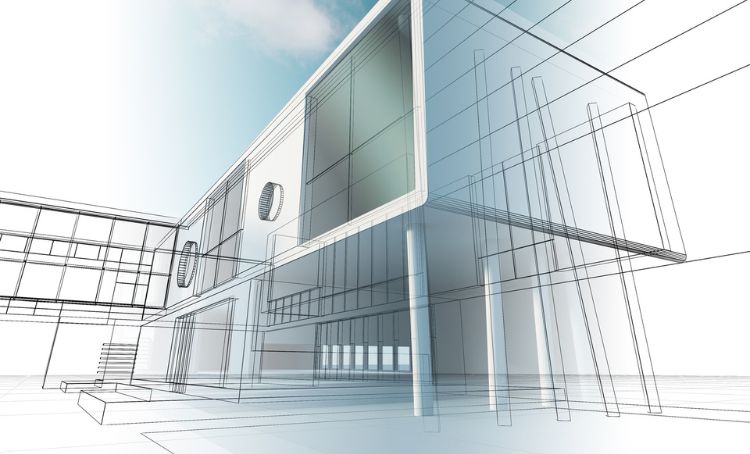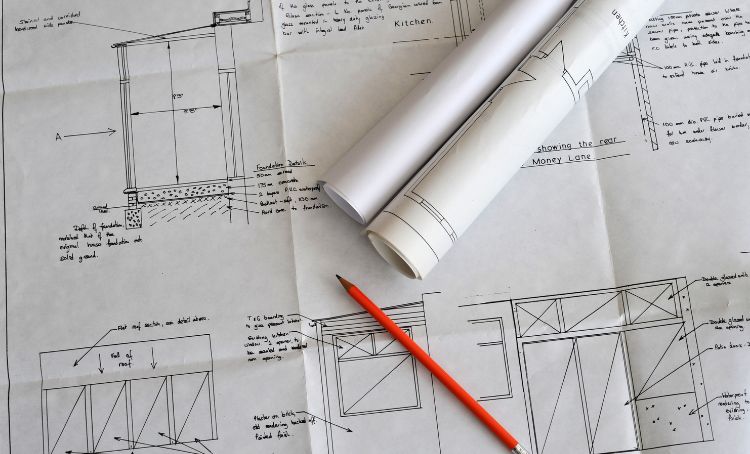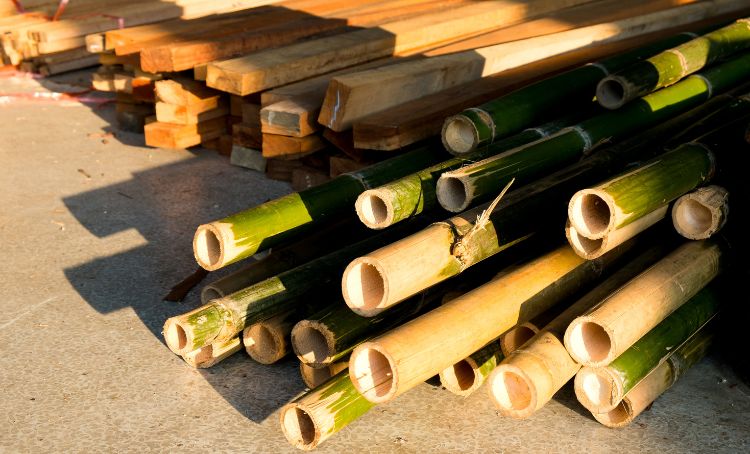

Building for the future:How to conduct a sustainable ground-up project

Taking on a ground-up construction project is the ideal opportunity to shape every aspect of your investment property. And, by weaving green building practices into the fabric of your new structure, you can help cultivate a future that promises not only environmental benefits but also healthier living spaces.
As the construction industry aims to minimize its environmental footprint, sustainable ground-up construction methods aren’t just innovations, but necessities. Using eco-friendly materials and technological advances is fast becoming a cornerstone for real estate developers aiming to achieve both efficiency and environmental stewardship.
If you’re hoping to bring sustainable methods into your construction process, here’s what you need to consider.
What makes a ground-up construction project sustainable?
There are a few elements involved in making sure your construction project has a more positive environmental impact. These should be integrated into your entire process, from planning and design to adding the finishing touches.
At each stage, think about using:
- sustainable building materials
- ethical construction processes
- conservation systems to reduce energy consumption
Sustainability in the construction industry isn’t just about “saving the planet”. It’s also about creating healthier homes for tenants.
One example of this is air quality. According to the EPA, concentrations of some pollutants are 2 to 5 times higher indoors than outdoors. By building a sustainable property you have a hand in improving indoor air quality by using non-toxic materials. These just so happen to be better for the environment, too, by reducing pollution.
Tax benefits for sustainable ground-up construction
It’s not easy – or cheap – being green. We’ve previously written about financing a new home build, and the difficulties involved, but when you add expensive eco materials to the mix it can become even more expensive.
One cost-effective way to supplement your financing is to take advantage of government tax breaks and credits. For example, the IRS offers a tax credit of up to $5,000 on newly built energy-efficient housing.
These may differ from state to state, so check with your local planning office (and a qualified tax specialist) to make sure you’re not missing out.
Bring sustainable practices into the 4 stages of ground-up construction

Ground-up construction involves four key stages that are essential for the successful completion of a building project. If you’re planning a sustainable construction project, consider what changes you can make at each point.
Stage 1: planning and design
This initial stage involves careful planning and designing of the project. This is when project managers determine the resources, equipment, timeline, budget, and other requirements before any construction work can begin.
This phase also includes material sourcing, subcontractor quotes, building permit acquisition, and site inspections.
The length of this phase can vary depending on the project scope, ranging from two to twelve weeks.
How to make it sustainable
For a greener build, at this point, you would incorporate your sustainability goals into your plans and building designs. You should also start researching the best green building materials, and local subcontractors with experience in the sustainable building space.
Step 2: procurement
During the procurement phase, materials, equipment, and services are effectively sourced, purchased, and transported. Essential team members and contractors are hired, and subcontractors may be brought in if specialized skills are needed.
This phase sets the foundation for the construction phase by ensuring all necessary resources are in place.
How to make it sustainable
Follow the research and plans you made during the design process. At this point, you’ll want to put together a construction team who know what they’re doing when it comes to using innovative construction materials, and hopefully have some experience in green construction.
Step 3: construction
The construction phase is where your architectural designs are transformed into physical structures: basically where your idea becomes a reality. It begins with site preparation, foundation laying, framing, and installation of HVAC and electrical systems. The exterior walls are built, followed by interior work, facade completion, and landscaping.
This phase can take several months to years, depending on the project size and complexity.
How to make it sustainable
At this point, you’ll be conducting quality control to make sure your team is laying the right groundwork for the final building to be as sustainable as possible while sticking to building codes. For example, adding solar panels, and that there’s enough ventilation to ensure indoor air quality is excellent.
You may want to have a sustainability consultant on-site to ensure everything is going to plan and to ensure all opportunities are being explored.
Step 4: post-construction
The post-construction phase occurs after the construction is complete, but before tenants move in. This phase involves final inspections, ensuring all construction work meets quality standards and regulations.
It includes finishing touches, such as landscaping and any remaining interior work, to prepare the building for occupancy.
How to make it sustainable
Double-check that all of the energy-saving features of the home are working as they should be. You can also make a few greener choices while adding the finishing touches, for example:
- During landscaping: plant local grasses and flowers. They’re designed to thrive in your climate, so won’t need to consume excess water or chemicals to survive. They’ll also provide a habitat for pollinators like bees.
- During outfitting: choose counter and flooring materials that have been made using sustainable production methods. Look for companies that use recycled materials and products that are designed for the long haul. For example, bamboo is an eco-friendly swap for wood, and recycled glass sparkles just like granite.
- During furnishing: whether you’re furnishing your property for tenants or for yourself, keep the sustainability going by choosing energy-efficient products. Look for the Energy Star label while shopping. These are awarded by the EPA to products that meet their strict standards.
To make sure your whole construction project runs smoothly from start to finish, read our blog post about 5 common mistakes to avoid.
Sustainable construction materials to consider during your design phase

Because you’re building from scratch, you get a say in what materials you use. And, for sustainable ground-up construction, choosing the right materials is crucial.
Using eco-friendly construction materials not only improves indoor air quality but also reduces the environmental impact of the building. There are lots of innovative construction materials to choose from.
- Recycled steel: Recycled steel is less expensive and just as durable as traditional steel, making it a sustainable option for construction projects.
- Bamboo: Bamboo is a fast-growing renewable resource that is strong, lightweight, and can be used for various construction purposes.
- Cork: Cork is a natural and renewable material harvested from the bark of cork oak trees without harming the tree, making it an eco-friendly choice for insulation and flooring.
- Straw bales: Straw bales are an agricultural byproduct that can be used as an insulating material in construction, providing high energy efficiency and reducing waste.
- Hempcrete: Hempcrete is a mixture of hemp fibers, lime, and water that creates a lightweight, breathable, and energy-efficient building material with minimal environmental impact.
- Recycled glass: Recycled glass can be used in construction as a sustainable alternative to traditional glass, reducing the need for new raw materials and waste.
- Sheep’s wool insulation: this is a natural and renewable material that is non-toxic, biodegradable, and provides excellent thermal and acoustic insulation properties.
- Strawboard: Strawboard is a composite board made from compressed straw fibers, offering a sustainable and lightweight option for interior finishes and furniture.
- Earthbag construction: Earthbag construction involves filling bags with earth or other natural materials to create durable and sustainable building structures, ideal for low-cost housing projects.
- Salvaged wood: Recycled wood from old buildings, pallets, or other sources can be repurposed for construction, reducing the demand for new timber and preventing waste.
Before settling on any of these innovative construction materials, take time in your planning phase to make sure they fit in with your construction budget, the aesthetic of your property, and your architectural plans.
It’s also worth looking at whether they’re available locally: having materials shipped halfway around the world isn’t very sustainable, after all… and could potentially increase your project timeline. On that note…
Purchase locally where possible
There are lots of benefits to using locally sourced materials. As well as reducing your project’s carbon footprint, it could save you money on long-distance transport fees. As well as shorter timelines, as you don’t need to wait as long for your sustainable construction materials to arrive.
Another sustainable point for shopping locally is that you’re supporting the local economy, reducing the reliance on imported goods, and doing your bit for community development. This means sustainability for market conditions by helping the area around your property flourish.
Go forth and build sustainably!

Taking on a sustainable ground-up construction project is a big task. While regular construction projects already provide a lot to think about and balance, adding the sustainable element can make things even more complicated.
However, doing it this way means you’re part of the future of construction. You’re ensuring that the piece of land you’ve purchased will provide an environmentally friendly space to benefit the local community and environment for generations.
If you’re looking for financial support to bring your sustainable building vision to life consider, a ground-up construction loan from Express Capital Financing. Our tailored loans offer up to 90% of the total project cost without any hidden fees or prepayment penalties. With our support, you can start on your new build project with unmatched ease, convenience, and financial flexibility.



Comments